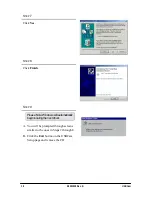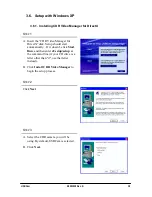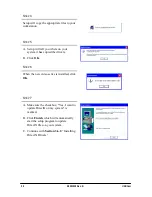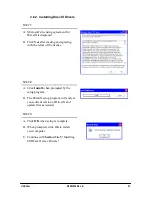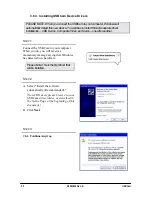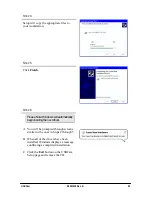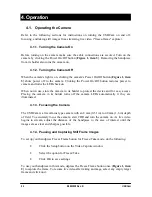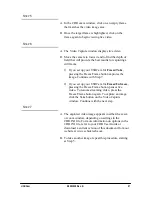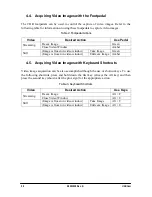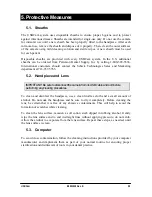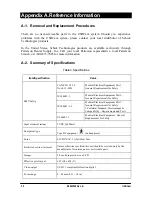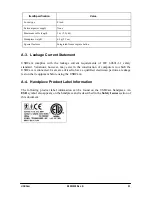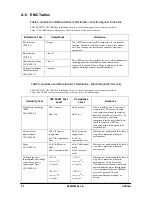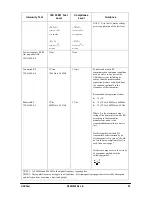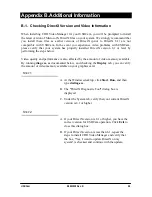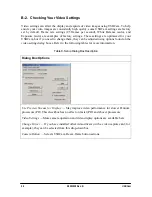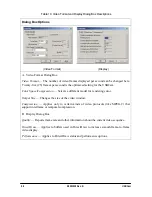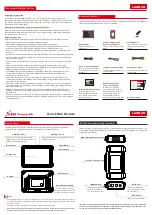
B1051039 Rev. B
USBCam
32
A-5. EMC Tables
Table 5. Guidance and Manufacturer's Declaration - Electromagnetic Emissions
PLEASE NOTE: The USBCam is intended for use in the electromagnetic environment specified
below. The USBCam user must ensure that it is used in such an environment.
Emissions Test
Compliance
Guidance
RF emissions
CISPR 11
Group 1
The USBCam system uses RF energy only for its internal
function. Therefore, its RF emissions are very low and are
not likely to cause any interference in nearby electronic
equipment.
RF emissions
CISPR 11
Class B
Harmonic emissions
IEC 61000-3-2
Class A
Voltage fluctuations/
flicker emissions
IEC 61000-3-3
Complies
The USBCam system is suitable for use in all establishments
including domestic establishments and those directly
connected to the public low-voltage supply network that
supplies buildings used for domestic purposes.
Table 6. Guidance and Manufacturer's Declaration - Electromagnetic Immunity
PLEASE NOTE: The USBCam is intended for use in the electromagnetic environment specified
below. The USBCam user must ensure that it is used in such an environment.
Immunity Test
IEC 60601 Test
Level
Compliance
Level
Guidance
Electrostatic discharge
(ESD)
IEC 61000-4-2
±
6 kV contact
±
8 kV air
±
6 kV contact
±
8 kV air
Floors should be wood, concrete or
ceramic tile. If floors are covered
with synthetic material, the relative
humidity should be at least 30%. To
avoid damage to electronic
components inside, users should not
touch the exposed USBCam
connector before discharging to an
earthed object.
Electrical fast
transient/burst
IEC 610004-4
±
2 kV for power
supply lines
±
1 kV for input/output
lines
±
2 kV for power
supply lines
±
1 kV for
input/output lines
Mains power quality should be that of
a typical commercial or hospital
environment.
Surge
IEC 61000-4-5
±
1 kV differential
mode
±
2kV common mode
±
1 kV differential
mode
±
2kV common
mode
Mains power quality should be that of
a typical commercial or hospital
environment.
Voltage dips, short
interruptions and voltage
variations on power
supply input lines
IEC 61000-4-11
< 5% U
T
(>95% dip in
U
T)
for 0.5
cycle
< 40% U
T
(>60% dip in
U
T)
for 5
cycles
< 5% U
T
(>95% dip in
U
T)
for 0.5
cycle
< 40% U
T
(>60% dip in
U
T)
for 5
cycles
Mains power quality should be that of
a typical commercial or hospital
environment. If the user of the
USBCam system requires continued
operation during mains interruptions,
it is recommended that the USBCam
system be powered from an
uninterruptible power supply or
battery.

